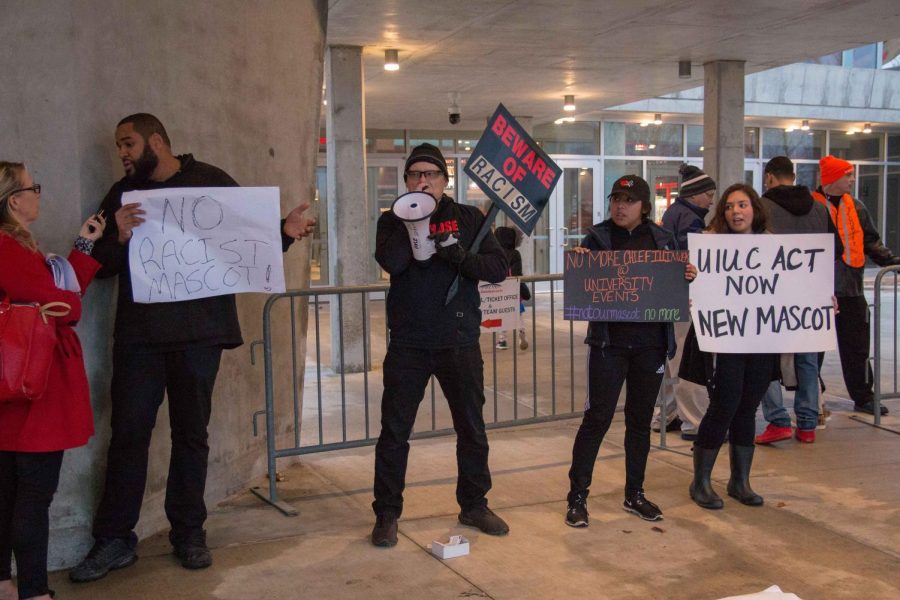University continues discussion for new mascot
Sep 27, 2018
The University is continuing its effort to move forward from Chief Illiniwek, and a recently released report on the Chancellor’s Critical Conversations on the topic shows participants felt strongly about the process being transparent and collaborative.
“We’re not trying to hide the fact or white wash the fact that the Chief was a part of this University,” said Chancellor Robert Jones . “Instead, we want to acknowledge it appropriately in a historical context, but also with that, comes the acknowledgment that the Chief is not coming back.”
The Critical Conversation about Chief Illiniwek and native imagery was one of the first times the University tried to create some common ground where people can come together and find a way to move forward, Jones said. It was not a place to discuss the pros and cons of having the Chief present at the University, as it specifically discussed ways to move forward.
The report mentioned it is important to engage participants in open dialogues to understand the different experiences with the tradition of the Chief.
“We made it perfectly clear that we were there to be respectful, be transparent,” Jones said. “That we were building a coalition of students that were willing to put the past to the side for a moment to think about how do we really create ways of truly honoring Native American heritage and culture in a way that this could be institutionalized and not offensive to anyone.”
Get The Daily Illini in your inbox!
However, Ivan “Alex” Dozier, Chief Illiniwek portrayer from 2010 to 2015, said there was no talk about how the Chief could be portrayed better nor any talk about what was offensive, it was just banned, with no compromise.
Dozier said when the Chief was the mascot for the University, it allowed for education, engagement and excitement in the community.
“It was letting people know the indigenous history of Illinois and giving them a place where they could connect with that culture and start asking questions,” he said. “It wasn’t just that this symbol that was here and had this reach, but it genuinely got people excited.”
Dozier said he always viewed the Chief as an important bridge to Native American culture and history, which should be addressed in these discussions. The Chief reached a broad audience throughout the entire state, Dozier said.
According to the Critical Conversations report, education and discussion about indigenous history would help the University continue to move forward but should be a responsibility of the University, not necessarily the Native American House, American Indian Studies Program or Native American student organizations.
Jones said simply following the process of moving forward and reading reports as they come out are ways for students, faculty and community members to stay informed about this issue.
“It had a very dominant place as a part of the culture of this University for more than 81 years and we are committed to finding ways to honor or to document that as a part of our history,” Jones said.
The report said stakeholders have repeatedly suggested adopting a new mascot to find closure and to help the University move forward.
“I’m not saying ‘yes’, there will be a new mascot’, I’m not saying ‘no, there won’t be a mascot’, but it is an issue that has come up consistently,” Jones said.
However, Jones said he does see the University is weighing the pros and cons of whether or not a new mascot could be a long-term solution.
“When I hear the University say that when they want to have a compromise, that they’re not interested in a mascot. I really, really hope that they’re telling the truth, but I also have my doubts,” Dozier said.
Dozier said he has seen several attempts at a new mascot before, but they fell through.
Jones said the Chief should be replaced with new traditions that truly honor the Native American culture and heritage, which involves input from Native communities.
“That’s what we’re looking for, we’re looking for common ground,” Jones said. “I can’t resolve issues where people are stuck or don’t want to move forward.”






